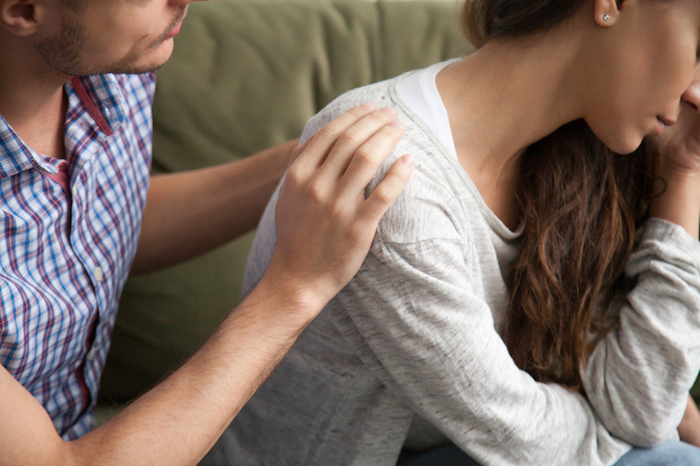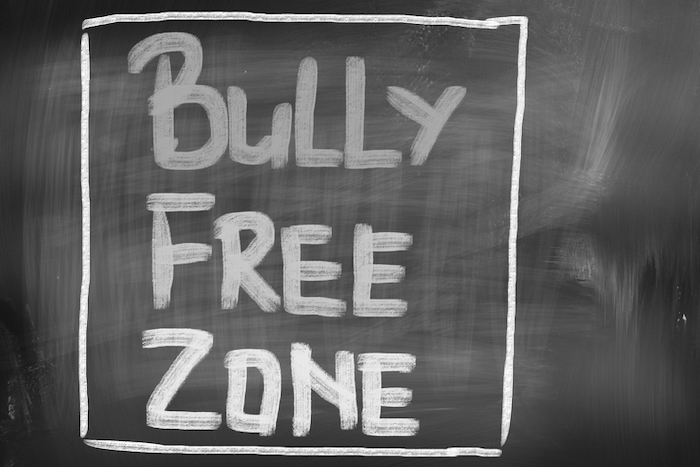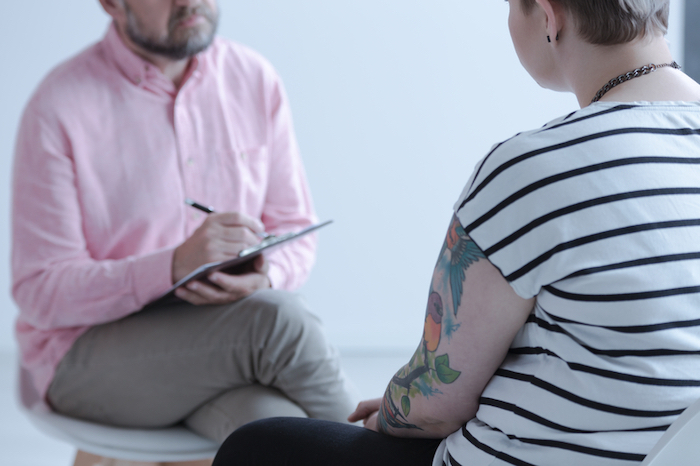- Calls to this hotline are currently being directed to Within Health or Eating Disorder Solutions
- Representatives are standing by 24/7 to help answer your questions
- All calls are confidential and HIPAA compliant
- There is no obligation or cost to call
- Eating Disorder Hope does not receive any commissions or fees dependent upon which provider you select
- Additional treatment providers are located on our directory or samhsa.gov
Bullying and Body Image
Bullying and obesity often go together. About 58% of boys and 63% of girls experience some form of bullying every day because of their size.[1]
Bullying is a complex behavior that can follow a child to school and back home again. Connected devices ensure that kids can never truly get away from their tormentors. The consequences can be devastating and may include suicide.
Changing your child’s weight isn’t the answer. Bullied kids already face a higher risk of eating disorders, and parental pressure could make things worse.
But you can take steps to keep your child safe. And if your child does have an eating disorder, you can help.
What Is Bullying?
Bullying is unwanted, aggressive behavior that stems from a perceived power imbalance.[2] The bully believes they are better than the victim. Often, weight issues give bullies the idea that they are superior.
Bullying can come in various forms.[2]
- Economic: Bullies may take the victim’s possessions, and sometimes, they ruin those items.
- Physical: Pinching, slapping, kicking, and other forms of physical violence are part of the bully playbook.
- Social: Bullies can spread rumors, either in person or online, damaging the victim’s standing or reputation.
- Verbal: Bullies can say (or yell) insults. If a crowd overhears the taunts, the embarrassment can worsen.
Students are rarely eager to discuss bullying, as they believe their attackers will retaliate. But most kids are aware of what bullying is.
Related Reading
- Teen bullying and eating disorders
- Bullying on social media
- What to do about cyber bullies
- Being bullied at college
- How to heal from being a victim of bullying
Where Are Kids Bullied?
Bullying episodes in movies often take place at school. While kids can be bullied in educational facilities, they can also experience bullying in areas they once considered safe.
At School
Gather students together, and it’s not uncommon for at least one party to lash out at another. Episodes are sometimes subtle and private, but sometimes, kids are bullied in front of teachers and peers they thought might protect them.
In a study of school bullying, researchers found that episodes often happened in the following places:[3]
- Hallways: 43.4%
- Classrooms: 42.1%
- Cafeterias: 26.8%
- Outside but on the school grounds: 21.9%
At Home
Kids aren’t safe from bullying when they come home after school. Many children are bullied by their siblings, and others experience teasing from their family members.
In severe cases, bullies in the home will tell lies about the victim to entice some form of undeserved punishment.[4]
Online
Almost 40% of kids ages 12 to 17 have been bullied online.[5] Since kids keep their connected devices with them around the clock, they may find no relief from the endless taunting and teasing. Some scroll through comments for hours, feeling worse with each passing moment.
Bullying Because of Weight: How Common Is It?
Any student can be bullied. Children find what they consider a fault, and they pick at that difference. If the victim seems sensitive about their weight, the bullies intensify their attacks.
National surveys have found among overweight middle-school-aged children that 30% of girls and 24% of boys experienced daily bullying, teasing, and/or rejection because of their size. These numbers doubled for overweight high school students, with 63% of girls and 58% of boys experiencing some form of bullying due to their weight and size.[1]
4 Consequences of Body Image Bullying
The consequences of bullying can be devastating and may vary from person to person, as the threshold for different forms of bullying ranges depending on the individual.
The experience of bullying is highly individualized and may depend on the type of bullying as well as the intensity and frequency involved. All this should be considered when assessing a victim’s physical, emotional, and psychological consequences.
These are four common problems associated with body image bullying.
1. Eating Disorders
About 65% of people with eating disorders say bullying contributed to the development of their condition.[6]
A negative body image will often develop when anyone is a victim of teasing about their weight or looks. If that individual has low self-esteem, perfectionism, or anxiety, they are often genetically predestined to develop an eating disorder.
In working with the adolescents and young adults at Remuda Ranch at The Meadows, it is observed that nearly 50% of patients have been bullied about their weight or looks at one time or another, usually predating the development of their eating disorder.
Of those bullied about their weight or looks, most stated that is why they started dieting or their disordered eating behavior. Most patients describe being bullied face to face, but more and more are describing cyberbullying.
2. Poor Mental Health
Post-traumatic stress disorder is typically diagnosed in patients who have been bullied. Their anxiety is so bad that they have nightmares and flashbacks and avoid the perpetrators to the point of dropping out or changing schools.
3. Strained Social Relationships
Relentless bullying can make children mistrust almost everyone they meet. They may withdraw from most social situations, as they worry about what people will say or do.
These patterns may persist into adulthood, limiting a child’s ability to develop close relationships or get good jobs.
4. Suicide
Obese children who are victims of body image bullying are two to three times more likely to report suicidal thoughts.[7] These students don’t believe they can make their tormentors stop, so they look for another way out.
Body Image Bullying: Warning Signs
Signs of being bullied look a lot like depression, and in fact, many victims of bullying become depressed.
Loss of friends and avoidance of social situations are common. Problems are frequently seen in the following areas:
- Sleep
- Decreased self-esteem
- Sudden weight loss
In addition, self-injurious behavior such as cutting or inflicting bruising, or even talking about suicide, is common.
Bullying & Body Shaming: How Can Parents Help?
You can’t make children be nice to one another. But you can help your child to accept their body, no matter its size. And you can help your child stand up to tormentors.
Parents can do the following:[8]
- Strategize: Encourage your child to stay with friends they trust. There is often more safety in numbers. Ask your child to identify adults who should know about the bullying.
- Encourage: Remind your child that asking for help is acceptable. And remind your child not to engage in any bullying episodes that happen at school.
- Support: Limit your child’s social media time. Find activities your child might enjoy, and highlight their strengths. Remind your child of your love.
Ensure that your child is not bullied in your home. Any teasing, even if you think it’s gentle, is harmful to kids. Make your home a safe and supportive space.
Schedule time to visit with your child’s teachers and school administrators. Explain what’s happening to your child, and ensure that something changes.
When to Get Professional Help for Bullying
Having the support of a specialized treatment team may effectively help intervene with any potential issues that may have been triggered by bullying, such as disordered eating.
If you think your child has an eating disorder, you can help by doing the following:[9]
- Talk to your child. Explain the behaviors you’ve seen, and outline how treatment might work.
- Schedule appointments. Go with your child to any assessments and sessions. Ask the team what you can do at home to support recovery.
- Listen. Let your child tell you what it’s like to live with an eating disorder. Ask how you can help.
Stay involved with your child, and keep lines of communication open. With your help, your child can get better.
References
- Bullying, Bullycide, and Childhood Obesity. Obesity Action Coalition. https://www.obesityaction.org/resources/bullying-bullycide-and-childhood-obesity/. 2011. Accessed July 2022.
- Fast Fact: Preventing Bullying. Centers for Disease Control and Prevention. https://www.cdc.gov/violenceprevention/youthviolence/bullyingresearch/fastfact.html. September 2021. Accessed July 2022.
- Facts About Bullying. StopBullying.gov. https://www.stopbullying.gov/resources/facts. September 2021. Accessed July 2022.
- Bullying at Home (Family Bullying). Befrendiers Worldwide. https://www.befrienders.org/bullying-at-home. Accessed July 2022.
- 11 Facts About Cyberbullying. DoSomething.org. https://www.dosomething.org/us/facts/11-facts-about-cyber-bullying. Accessed July 2022.
- The Effects of Weight-Related Bullying. Nationwide Children’s. https://www.nationwidechildrens.org/family-resources-education/700childrens/2015/05/the-effects-of-weight-related-bullying. May 2015. Accessed July 2022.
- Bullying and Eating Disorders. National Eating Disorders Association. https://www.nationaleatingdisorders.org/bullying. Accessed July 2022.
- Weight-Based Teasing and Bullying in Children: How Parents Can Help. American Academy of Pediatrics. https://www.healthychildren.org/English/health-issues/conditions/obesity/Pages/Teasing-and-Bullying.aspx. November 2017. Accessed July 2022.
- Eating Disorders. Nemours. https://kidshealth.org/en/parents/eating-disorders.html. November 2021. Accessed July 2022.






